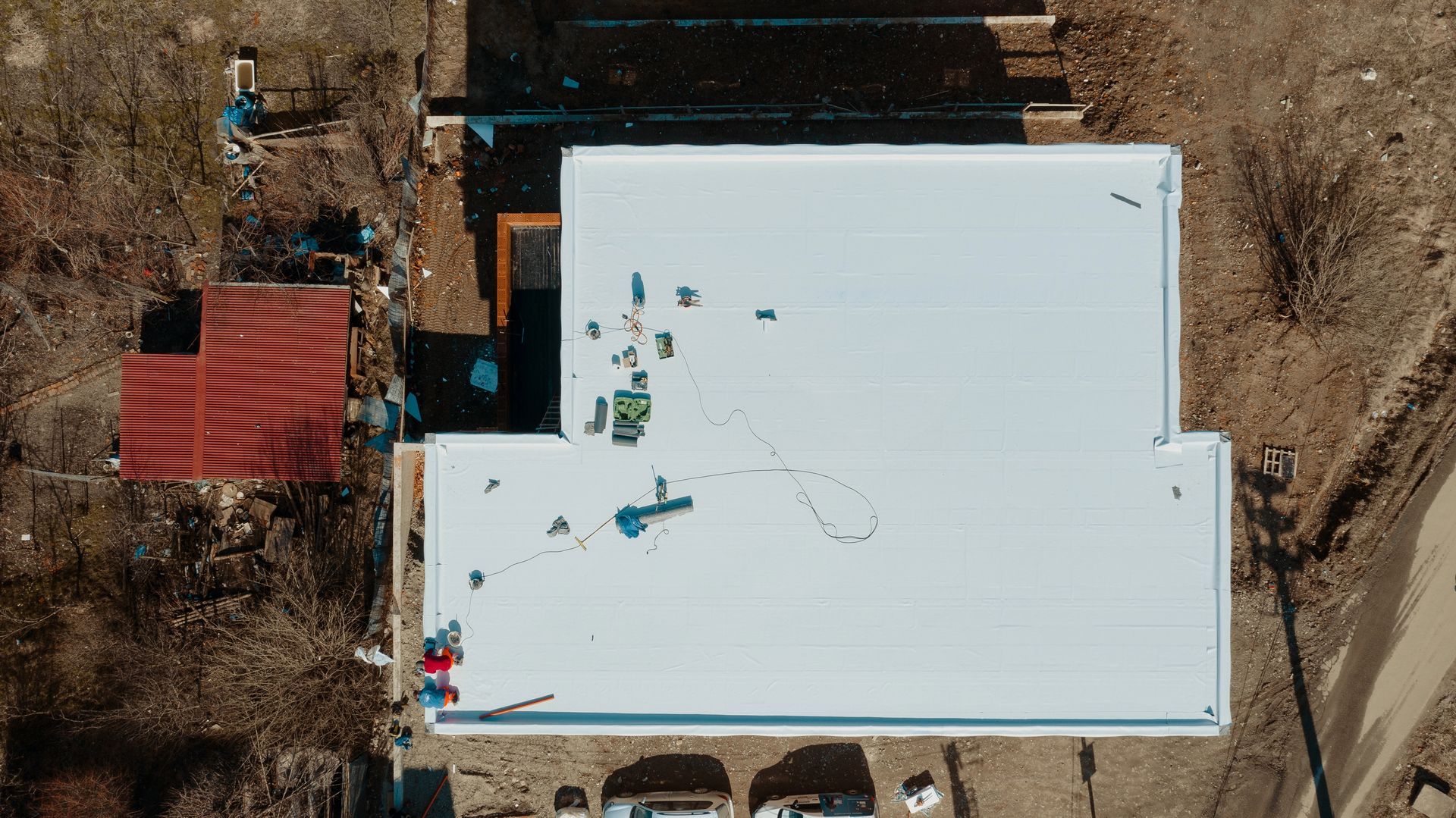TPO vs. EPDM vs. PVC: Which Flat Roofing Material Is Best?
A Side-by-Side Comparison to Help You Choose the Right System for Your Flat Roof
A Side-by-Side Comparison to Help You Choose the Right System for Your Flat Roof
When it comes to replacing or installing a flat roof, choosing the right material is one of the most important decisions you’ll make. TPO, EPDM, and PVC are the three most common options—and while they might look similar from the ground, each one performs differently depending on your building’s needs, budget, and location.
At DM Roof Restorations, we specialize in flat roof solutions that last, and we often get asked, “Which is better: TPO, EPDM, or PVC?” The answer depends on a few key factors. Let’s break them down.
What Is TPO Roofing?
Thermoplastic Olefin (TPO) is one of the fastest-growing flat roofing systems in the U.S. It’s a white, reflective single-ply membrane known for its energy efficiency and affordability.
Pros:
- Reflects sunlight, reducing cooling costs
- Heat-welded seams for superior leak protection
- Affordable and widely available
- Resistant to mold, punctures, and dirt buildup
Best For:
- Commercial buildings seeking energy efficiency
- Newer construction or roof replacements with proper insulation
What Is EPDM Roofing?
Ethylene Propylene Diene Monomer (EPDM) is a black rubber membrane known for its durability and flexibility. It’s been used for decades in flat roofing and is particularly effective in cold climates.
Pros:
- Long lifespan (20–30+ years)
- Excellent resistance to cold, hail, and UV exposure
- Simple installation and low cost
- Flexible in freeze-thaw conditions
Best For:
- Budget-conscious property owners
- Buildings in cold or variable climates (like Wisconsin)
- Roofs with fewer foot traffic or penetrations
What Is PVC Roofing?
Polyvinyl Chloride (PVC) is a premium single-ply membrane known for its strength, chemical resistance, and longevity. It’s often used on commercial roofs that experience grease, oil, or chemical exposure.
Pros:
- Exceptional chemical and grease resistance
- Heat-welded seams for watertight performance
- Highly reflective and energy efficient
- Long lifespan and fire-resistant
Best For:
- Restaurants, industrial facilities, or buildings with vented chemicals
- Property owners prioritizing performance over initial cost
| Feature | TPO | EPDM | PVC |
|---|---|---|---|
| Cost | Moderate | Lowest | Highest |
| Lifespan | 15-20 yrs | 20-30+ yrs | 20-30+ yrs |
| UV Restistance | High | High | High |
| Chemical Resistance | Moderate | Low | High |
| Energy Efficiency | Excellent | Moderate | Excellent |
| Installation | Heat-welded | Adhered/ballasted | Heat-welded |
Let DM Roof Restorations Help You Decide
Every building is different, and choosing the right flat roofing material isn’t just about cost—it’s about long-term performance, durability, and peace of mind. At DM Roof Restorations, we offer honest assessments, expert installations, and tailored recommendations to fit your needs and budget.

